
Structural Monitoring and Maintenance, An International Journal
Scope & Guideline
Transforming insights into structural monitoring excellence.
Introduction
Aims and Scopes
- Structural Health Monitoring (SHM):
The journal emphasizes research on SHM techniques, including the use of sensors, data acquisition systems, and advanced algorithms for real-time monitoring of structural conditions. - Damage Detection and Assessment:
Research articles often explore various methods for detecting and assessing damage in structures, including vibration-based techniques, machine learning approaches, and non-destructive testing methods. - Innovative Materials and Techniques:
There is a consistent focus on the use of novel materials and construction techniques, such as fiber-reinforced composites, to enhance the performance and longevity of structures. - Seismic and Structural Resilience:
The journal covers methodologies for improving the seismic performance of structures, including the development of fragility curves and performance-based assessments. - Analytical and Numerical Modeling:
Papers frequently present analytical models and numerical simulations to predict structural behavior under various loads, contributing to better design and maintenance practices. - Sustainability and Environmental Impact:
The incorporation of sustainability principles in structural engineering, including the use of eco-friendly materials and methods, is a notable area of interest.
Trending and Emerging
- Integration of Machine Learning and AI:
There is a growing trend towards the application of machine learning and artificial intelligence in structural health monitoring, damage detection, and predictive maintenance, showcasing the potential for improved decision-making. - Real-Time Data Acquisition and Analysis:
Innovative methods for real-time data acquisition and analysis are increasingly prevalent, enhancing the capability for immediate assessment of structural integrity. - Smart and Autonomous Monitoring Systems:
Research is increasingly focusing on the development of smart systems that utilize IoT and automation for continuous monitoring of structures, enabling proactive maintenance approaches. - Sustainability in Structural Engineering:
Emerging themes related to sustainability, including lifecycle assessment and the use of recycled materials, are becoming more prominent as the field addresses environmental concerns. - Advanced Sensor Technologies:
The use of advanced sensor technologies, such as fiber optic sensors and wireless monitoring systems, is on the rise, reflecting the need for more efficient and less intrusive monitoring solutions.
Declining or Waning
- Traditional Materials in Structural Engineering:
Research focusing on conventional materials like plain concrete and steel has diminished as newer materials and composites gain prominence in structural applications. - Static Load Analysis:
There has been a noticeable decrease in studies centered solely on static load analysis, as the field shifts towards dynamic analysis and real-time monitoring techniques. - Basic Structural Design Principles:
Papers that primarily discuss fundamental design principles without integration of monitoring or maintenance strategies have become less frequent, indicating a shift towards more applied research.
Similar Journals
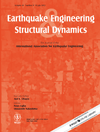
EARTHQUAKE ENGINEERING & STRUCTURAL DYNAMICS
Advancing seismic safety through innovative research.EARTHQUAKE ENGINEERING & STRUCTURAL DYNAMICS, published by Wiley, is a leading journal recognized for its significant contributions to the domains of civil and structural engineering, as well as geotechnical engineering and engineering geology. With an impressive Q1 ranking in multiple categories, including Civil and Structural Engineering, and an esteemed Scopus ranking placing it in the 82nd percentile, the journal serves as a premier platform for disseminating pioneering research and innovative methodologies related to earthquake engineering and dynamic structural analysis. Established in 1972, this journal boasts a comprehensive coverage of topics from theoretical developments to practical applications, making it an essential resource for researchers, industry professionals, and students eager to expand their understanding of seismic safety and structural resilience. Though it does not offer open access, the journal continues to be a cornerstone for scholarly communication within the earthquake engineering community, advancing knowledge that shapes better engineering practices worldwide.
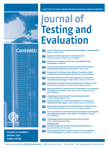
JOURNAL OF TESTING AND EVALUATION
Exploring Breakthroughs in Materials Science and Mechanical EngineeringWelcome to the JOURNAL OF TESTING AND EVALUATION, an esteemed publication dedicated to the fields of materials science and mechanical engineering, published by the American Society for Testing and Materials. With a history of excellence since its inception in 1973 and a convergence of insightful research extending to 2024, this journal serves as a pivotal platform for disseminating innovative research, methodologies, and findings in testing and evaluation processes. Although it is not an open-access journal, it holds a respectable impact with a ranking in the third quartile across various categories and Scopus ranks, making it an important resource for academic and industry professionals alike. By providing rigorous evaluation of materials and engineering practices, the JOURNAL OF TESTING AND EVALUATION continues to shape the future of research in these dynamic fields, offering vital contributions that are essential for advancing knowledge and practical applications.

Earthquake Engineering and Engineering Vibration
Shaping the future of earthquake engineering and structural safety.Earthquake Engineering and Engineering Vibration, published by Springer, is a leading international journal dedicated to the field of earthquake engineering, structural dynamics, and the associated vibrational research integral to understanding and mitigating seismic risks. With its print ISSN 1671-3664 and E-ISSN 1993-503X, the journal operates from its headquarters in New York, USA. The journal has achieved a commendable Q2 category ranking across multiple engineering disciplines, reflecting its importance to the building and construction, civil and structural engineering, geophysics, geotechnical engineering, and mechanical engineering fields. The journal serves as a vital platform for researchers, practitioners, and students to disseminate their findings, share innovative methodologies, and contribute to advancements in earthquake resilience and engineering practices. Earthquake Engineering and Engineering Vibration is committed to fostering open dialogue and collaboration within the global research community, ensuring that its contributions are both impactful and relevant to contemporary challenges in engineering and environmental safety.
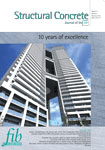
Structural Concrete
Shaping Tomorrow's Structures with Concrete KnowledgeStructural Concrete, published by ERNST & SOHN, is a premier journal dedicated to the field of Civil and Structural Engineering, focusing on innovative research and advancements in concrete materials and technologies. With an impressive impact factor and a consistent ranking in the Q1 category of both Building and Construction and Civil and Structural Engineering, the journal stands as a vital resource for researchers, professionals, and students alike. It is indexed with notable Scopus ranks, underscoring its significance within the academic community. The journal spans a comprehensive scope (from 2001 to the present) that encompasses diverse topics related to the behavior, design, and application of structural concrete. Although not an open access publication, it offers valuable insights and cutting-edge knowledge that contribute to the ongoing evolution of construction practices and materials science. Structural Concrete is an essential platform for sharing pioneering findings and fostering collaboration within this dynamic field.
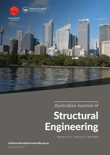
Australian Journal of Structural Engineering
Advancing Structural Innovation for a Sustainable FutureThe Australian Journal of Structural Engineering (ISSN: 1328-7982, E-ISSN: 2204-2261), published by TAYLOR & FRANCIS AS, serves as a pivotal platform for disseminating high-quality research in the fields of civil and structural engineering, mechanical engineering, and mechanics of materials. With a publications timeline from 2008 to 2024, this journal plays a crucial role in advancing knowledge and practice within its disciplines, boasting Q3 rankings across various categories as of 2023. Although it operates under a subscription model, the journal remains accessible to a diverse audience, including researchers, professionals, and students, seeking to enrich their understanding and engagement with contemporary engineering challenges. The Australian Journal of Structural Engineering is not only a repository of innovative ideas but also a vital resource for fostering collaboration and sparking discussion among scholars and practitioners striving for excellence in engineering design and analysis.
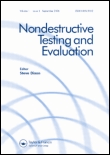
Nondestructive Testing and Evaluation
Advancing Safety Through Innovative Testing TechniquesNondestructive Testing and Evaluation, published by Taylor & Francis Ltd, is a premier international journal dedicated to the dissemination of innovative research and practices in the field of nondestructive testing and evaluation. With a robust ISSN of 1058-9759 and an E-ISSN of 1477-2671, this journal has consistently served as a vital resource for researchers, professionals, and students interested in enhancing the safety and reliability of materials and structures through advanced testing techniques. The journal's significant impact, evidenced by its Q2 rankings across multiple categories—including Materials Science, Mechanical Engineering, and Physics and Astronomy, along with commendable Scopus rankings—reflects its commitment to high-quality scholarship. Covering the convergence of research from 1989 to 2024, Nondestructive Testing and Evaluation plays a crucial role in advancing methodologies that drive innovation in various engineering disciplines. While currently not offering an Open Access option, the journal remains a respected platform for exchanging knowledge that shapes the future of nondestructive methodologies.
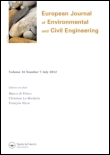
European Journal of Environmental and Civil Engineering
Elevating Standards in Civil and Environmental Engineering ResearchThe European Journal of Environmental and Civil Engineering, published by Taylor & Francis Ltd, is a prestigious peer-reviewed journal that serves as a vital platform for advancing knowledge in the fields of Civil and Structural Engineering as well as Environmental Engineering. With an impressive impact factor and categorized in the Q2 quartile for both engineering fields, this journal occupies a significant position in the scholarly community. Its focused scope encompasses innovative research, case studies, and practical applications that address contemporary environmental and infrastructural challenges. Researchers, professionals, and students alike benefit from the journal's commitment to high-quality discourse, as evidenced by its Scopus rankings, which place it in the top 30% in Civil and Structural Engineering and the top 40% in Environmental Engineering. Through the publication of cutting-edge studies and a commitment to fostering interdisciplinary dialogue, the European Journal of Environmental and Civil Engineering remains an essential resource for those dedicated to improving our built environment and safeguarding our natural resources.

Bridge Structures
Innovating Design and Maintenance in Structural IntegrityBridge Structures is an esteemed academic journal dedicated to the field of structural engineering, particularly focusing on the design, analysis, and maintenance of bridge systems. Published by IOS PRESS, a reputable publisher known for its contributions to various scientific fields, the journal serves as an integral platform for disseminating innovative research and advancements within the domain. With an ISSN of 1573-2487 and an E-ISSN of 1744-8999, Bridge Structures has established itself over the years—covering contributions from 2005 to 2024. The journal has attained a commendable ranking within the Q3 category in Building and Construction and holds a position within the 28th percentile among its peers according to the Scopus rankings. Though the journal operates on a subscription basis, its commitment to advancing engineering knowledge is paramount, making it essential reading for researchers, practitioners, and students eager to deepen their understanding of bridge engineering. The journal not only explores theoretical advancements but also emphasizes practical applications, providing a well-rounded perspective on current challenges and solutions in the field of bridge structures.

Structural Integrity and Life-Integritet I Vek Konstrukcija
Advancing Structural Excellence and Safety.Structural Integrity and Life - Integritet I Vek Konstrukcija is a prominent open-access journal dedicated to advancing the fields of Civil and Structural Engineering, Mechanics of Materials, and Safety, Risk, Reliability, and Quality. Published by the SOC STRUCTURAL INTEGRITY & LIFE, this journal has been disseminating high-quality research since 2001 from its base in Belgrade, Serbia. The journal's commitment to open access ensures that vital research is freely accessible to a global audience, fostering collaboration and innovation within the academic community. With an impressive categorization in the 2023 quartiles, including Q2 in Metals and Alloys and Q3 in related fields, Structural Integrity and Life stands as a vital resource for researchers, professionals, and students striving to enhance understanding and applications in structural integrity and material performance. The journal invites contributions that address critical issues in the field, pushing the boundaries of knowledge and practical applications, and welcomes both empirical studies and theoretical discussions that can drive forward the next generation of engineering solutions.

Journal of Structural Integrity and Maintenance
Championing Knowledge for Safer, More Efficient StructuresThe Journal of Structural Integrity and Maintenance, published by Taylor & Francis Ltd, serves as a prestigious platform dedicated to the advancement of knowledge in the fields of structural integrity, civil engineering, and materials science. With an ISSN of 2470-5314 and an E-ISSN of 2470-5322, this journal is uniquely positioned to address the critical challenges faced by researchers and professionals in building and construction, mechanical engineering, and related domains. Since its inception in 2016, this journal has been consistently recognized for its quality, currently holding a Q2 rank across several disciplines, including Building and Construction and Civil and Structural Engineering in 2023. The journal aims to publish high-quality research that contributes to the understanding and maintenance of structural integrity, fostering innovations that promote safety, efficiency, and sustainability in engineering practices. Researchers and students alike are encouraged to engage with this rich repository of knowledge, which plays a vital role in shaping future advancements in structural engineering and materials science.